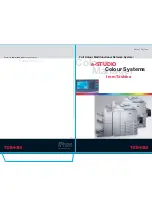
Appendix A: Glossary
A-10
physical units (PUs). Typically, a logical unit is a unique connection to an application program. A
physical unit is usually a hardware device, such as a terminal control unit.
MAC.
M
edia
A
ccess
C
ontrol. MAC is used to address a computer's unique hardware num-
ber. (On an Ethernet LAN, the device MAC and the device Ethernet address are the same, how-
ever they are not to be confused with the IP address.) When connected to the Internet (e.g., a
host computer), a correspondence table relates the computer’s IP address to your computer's
physical (MAC) address on the LAN.
MAC Address.
The hardware address of a device connected to a shared network medium.
The MAC address is the device’s unique hardware number. On an Ethernet LAN, it's the same
as your Ethernet address. The MAC address is used by the Media Access Control sub layer of
the Data-Link Layer (DLC) of telecommunication protocols. There is a different MAC sub layer
for each physical device type. The other sub layer level in the DLC layer is the Logical Link Con-
trol sub layer. When connected to the Internet a correspondence table relates the device’s IP ad-
dress to its physical (MAC) address on the LAN.
man page.
In UNIX systems, the man pages are an on-line help facility that provide information
on various topics.
MAPI. M
essaging
A
pplications
P
rogram
I
nterface, a popular method for applications programs
to send E-mail messages through Windows operating systems.
MIB.
M
anagement
I
nformation
B
ase. A MIB is a formal description of a set of network ob-
jects that can be managed using the Simple Network Management Protocol (SNMP). The format
of the MIB is defined as part of the SNMP. (All other MIBs are extensions of this basic man-
agement information base.) MIB-I refers to the initial MIB definition; MIB-II refers to the current
definition. SNMPv2 includes MIB-II and adds some new objects.
MOP.
M
aintenance-
O
riented
P
rotocol, the protocol used by the VMS NCP and NCL utilities
and for downloading files.
Multiprotocol.
Refers to the ability to handle multiple protocols simultaneously. In a print
server, this means that multiple computers can concurrently send print jobs to the same printer.
Name Server.
A node on a TCP/IP network that provides a list of all nodes on the network.
The name server is accessible from any node, and eliminates the need to have separate hosts files
on each node.
NCL. N
etwork
C
ontrol
L
anguage. The method in OpenVMS V6.1 and later for accessing and
maintaining remote devices. Replaces NCP.
NCP. N
etwork
C
ontrol
P
rogram, a VMS utility for accessing and maintaining remote devices.
















































